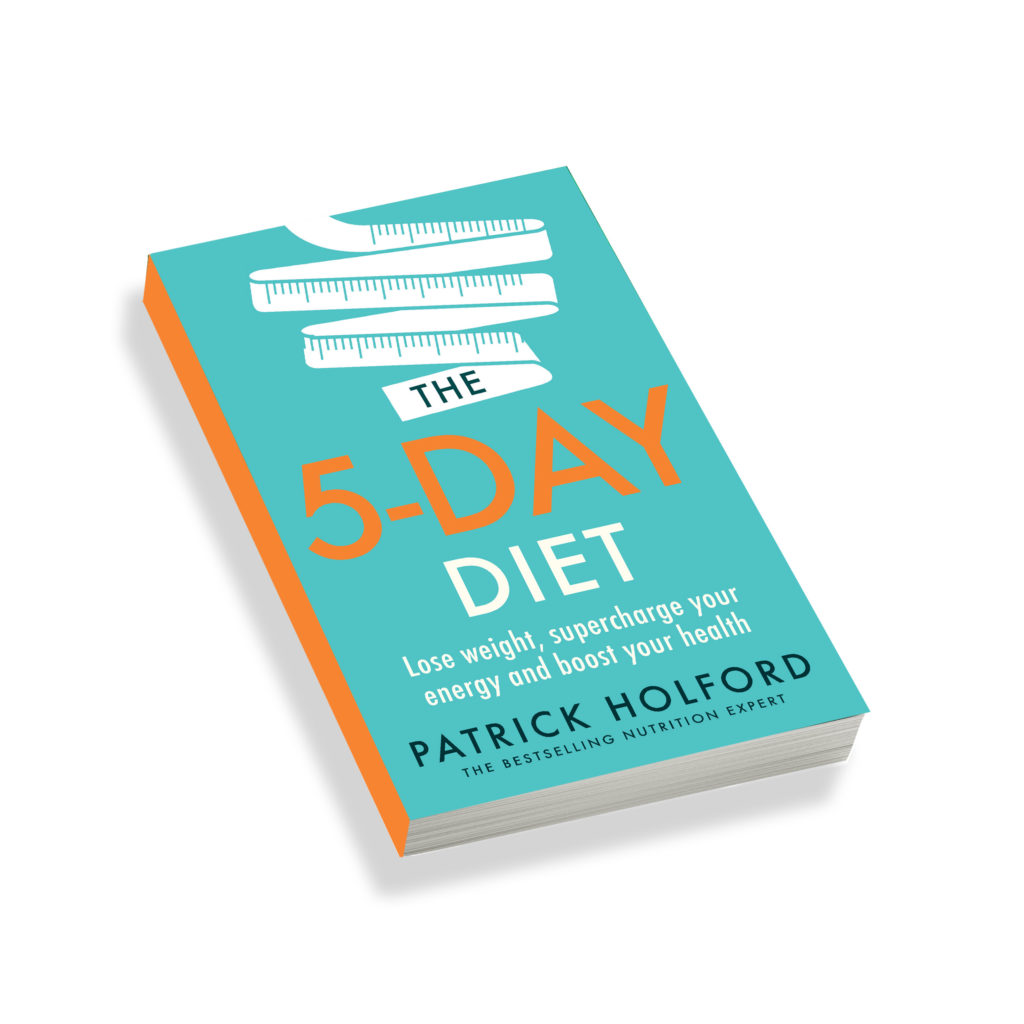Book Review for: The 5-Day Diet by best-selling nutritional expert Patrick Holford
We are often faced with a variety of different “trendy” diets, such as Adkins, keto, paleo, beach body, low this and low that, and oftentimes, diets are viewed as “quick fixes” and not necessarily something that we do for life, or we stop when we get bored by it and end up back at square one.
Patrick’s approach to the “diet” is more refreshing; yes he’s using the word “diet”, but he isn’t saying that we need to be on long-term restrictive diets to achieve our health goals, instead he is introducing the concept of a short and sweet “regime” that focusses primarily on optimising health. It’s something you can repeat, but only for five days at a time, in order to trigger health-benefitting autophagy, which reboots your metabolism, supports detoxification and also offers the opportunity to lose some weight, if that’s your goal.
For a lot of people, the 5-day diet concept will sound much more manageable than other fasting diets, like the 5:2, which isn’t something that is suitable for everyone, or something many of us find achievable or even appealing.
The book is a quick read (which is handy when you want to get started with a protocol as soon as possible!) and it’s easy to jump in and select the information that you need. It’s broken down into three easy-to-digest sections – why the 5-day diet works, instructions on how to actually carry out the diet, and lastly, how to transition to Patrick’s low GL diet for life. We are told exactly what to eat and drink over the five days, as well as recommended exercise, and then given clear steps on how to transition out of the 5-day diet – there’s no confusion about what to do next.
What’s in the Five Day Diet?
This is a very precise diet that involves eating less calories, 800 calories, a day, but virtually no carbs and almost no meat or dairy protein. Dairy products switch off autophagy – they tells cells to grow. The diet is carefully designed to include foods that help to trigger autophagy and give you all the right nutrients. Kale, cauliflower, olives, berries, watercress, rocket, mushrooms, ginger, cinnamon, cacao (sugar-free chocolate) and the essential fats in oily fish are a few examples of foods that can trigger autophagy. There are specific interchangeable lunches and dinners, from an asparagus omelette to marinated salmon with spinach and kale for lunch or a watercress, leek and coconut soup or a roasted tomato and basil soup, all with dead easy recipes to follow.
There’s a 18 hour ‘no food’ fast between dinner and lunch, but you’ll start your day with a ‘hybrid latté’, made with coffee (or decaf), carb-free almond milk, almond butter and a spoonful of a special oil called Ketofast, derived from coconut, which the body can turn quickly into ketones for energy so you don’t feel hungry. There’s a mid-morning snack of dried nori ‘seaweed crispies’ – quite delicious but almost zero calories.
In theory you could skip over part one and head straight to the practicalities, but sometimes knowing the whys of doing something really supports the motivation of seeing things through. The highlights in part one include the detailed look at autophagy, ketosis and also assessing your own detoxification potential, so it really sets the foundations for why this diet is about so much more than losing weight.
We believe that this isn’t one of those books that sits around collecting dust after the “beach body” fad diet disappears for another year – you can keep coming back to the book throughout the year and repeat the “diet” to support your long-term health and give it a boost when it needs it.
